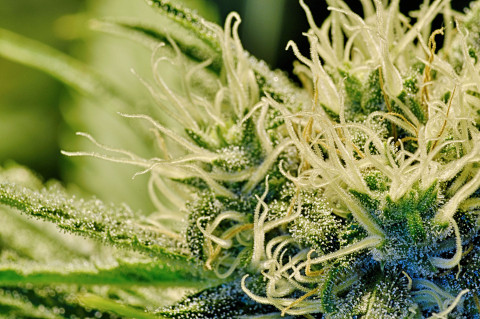Conditionalities of the WHO cannabis recommendations Comments on the decision tree

Don Goofy / Flickr
Martin Jelsma / TNI / 29 January 2020
The CND secretariat has “for ease of reference only” presented a decision tree depicting certain conditionalities of the WHO/ECDD recommendations. The scheme only depicts the recommendations related to the transfer of tetrahydrocannabinol (THC) and dronabinol (delta-9-THC)* from Schedules I and II of the 1971 Convention to Schedule I of the 1961 Convention: recommendations 5.2.1, 5.2.2, 5.3.1 and 5.3.2.
The WHO has specifically pointed out this conditionality with the aim of preventing the highly unlikely scenario that the CND would vote against inclusion of THC in the 1961 Convention but adopt deletion from 1971, resulting in the end of international control on cannabinoids. The other, much more likely, scenario that also needs to be prevented, is that the CND agrees to the inclusion of THC in 1961 but votes down the deletion from 1971, resulting in the various THCs being controlled by both Conventions. As pointed out in the WHO Guidance, that would be a very undesirable situation, but the decision tree leaves that open as a possible outcome.
The WHO did not include explicit conditionality for their other recommendations (5.1, 5.4, 5.5 and 5.6), but several important interrelationships could be pointed out with regard to 5.5 (footnote on CBD preparations with <0.2% THC not being under international control) and 5.6 (control exemptions for certain pharmaceutical preparations with THC under Schedule III). For example, it is questionable if adding a footnote to Schedule I of the 1961 Convention about THC thresholds is legitimate, in the case that the transfer of THC from 1971 to 1961 is rejected. Similarly, without the prior adoption of the transfer, allowing exemptions for certain THC preparations by including them in Schedule III of the 1961 Convention would result in those preparations being controlled under both Conventions, and in schedules with quite different control and reporting provisions.
Several additional interdependencies of the recommendations can be identified, altogether leading to a much more complex decision tree than the one presented by the CND secretariat. Basically, only 5.1 (deletion of cannabis and resin from Schedule IV of the 1961 Convention) and 5.4 (deletion of ‘Extracts and Tinctures’ from Schedule I of the 1961 Convention) can be regarded as largely ‘stand-alone’ voting decisions; all the others are intimately interrelated.
1) 5.2.1, 5.2.2, 5.3.1 & 5.3.2: the transfer from 1971 to 1961
The conditionality of the proposed transfer from 1971 to 1961 is interpreted only in one direction: the deletion of THC from the 1971 schedules is subject to the CND’s adoption of the recommendation to add them to Schedule I of the 1961 Convention. That is how the WHO has worded the recommendations and how it is depicted in the decision tree. The argument used, based on the WHO guidance, is that “to facilitate efficient administration of the international control system, it is not advisable to place a substance under more than one Convention”. That argument, however, works equally in the other direction: the vote to adopt the inclusion in 1961 therefore needs to be subject to the deletion from 1971 as well, even though this is not spelled out in the WHO recommendations. Given the different voting requirements (simple majority for 1961, 2/3 majority for 1971), the scenario that inclusion in 1961 would be adopted but the subsequent deletion from 1971 rejected, is in fact quite likely. In this case, THC would be controlled under both treaties as the tree indicates. This outcome should be prevented and should be noted in the decision tree as an undesirable outcome to be avoided (rather than as currently depicted as a possible outcome without any comment on the implications). Therefore, at the moment of the vote on the inclusion in 1961, it should be made clear that the adoption would only be effectuated if in the subsequent vote the CND also adopts the recommendation on the deletion from 1971. In case the CND votes against the deletion from 1971, the inclusion in 1961 should be annulled.
2) 5.5 & the transfer
Many questions have been raised about the WHO recommendation to add a footnote to Schedule I of the 1961 Convention that establishes that CBD preparations with less than 0.2 per cent of THC are not under international control. The need to include a specific threshold and the choice for 0.2 per cent is particularly subject to questioning by member states, some of whom have already established higher thresholds at the national level. But with regard to conditionalities, the main question is whether a footnote specifying a THC threshold can be added to the 1961 Convention as long as THC remains controlled under the 1971 Convention. This could lead to a confusing situation where preparations with very low THC-content might be exempted from control under the 1961 Convention but would still be controlled under the 1971 Convention. This would defeat the sole purpose of the proposed footnote, which is meant to clarify that CBD preparations, including those containing minimal traces of THC, are not under international control at all.
Additionally, in case the transfer to 1961 would be adopted, including the deletion from 1971, but the footnote would be rejected for other reasons (objections against the specific threshold of 0.2%, for example), the result would be that in principle any preparation (including CBD oils) containing even trace amounts of THC would have to be strictly controlled, because of the different treatment of preparations under the 1961 Convention compared to the more flexible 1971 Convention (see below under point 4).
3) 5.6 & the transfer
The WHO recommends adding certain THC preparations “compounded as pharmaceutical preparations … in such a way that delta-9-tetrahydrocannabinol (dronabinol) cannot be recovered by readily available means” to Schedule III of the 1961 Convention, granting them exemption from several control measures required for Schedule I. Again, many questions have been raised about this recommendation, especially about the use of “pharmaceutical preparations”, a term which does not appear anywhere in the conventions. When asked whether this recommendation depended on the adoption of the proposed transfer of THC from the 1971 to the 1961 Convention, the WHO denied the existence of any conditionality, answering: “This recommendation is still relevant if the recommendation to move dronabinol (delta-9-THC) to the 1961 Convention is not supported, as the medications may contain dronabinol derived from the cannabis plant and therefore qualify as preparations of cannabis.” The CND secretariat’s decision tree therefore does not refer to 5.6.
However, Schedule III of the Single Convention was meant exclusively for preparations containing ‘narcotic drugs’ that are included in schedules I and II. If THC remains controlled as a ‘psychotropic substance’ under the 1971 Convention, it would not make sense to include THC preparations under the 1961 Convention; also because that would mean those preparations would be subject to the -quite different- control provisions of both treaties.
4) 5.6 & the transfer: exempt preparations
Different combinations of vote outcomes on 5.2.1, 5.2.2 (the transfer of dronabinol to Schedule I of the 1961 Convention and deletion from Schedule II of the 1971 Convention) and 5.6 (certain preparations included in Schedule III of the 1961 Convention) could have far-reaching consequences for the availability of medicines containing THC. A major difference between the control regimes of the 1961 and 1971 Conventions is how certain preparations containing narcotic drugs or psychotropic substances can be exempted from specific control provisions. Under Article 3 the 1971 Convention on ‘Special provisions regarding the control of preparations’, a Party may decide itself to exempt certain preparations containing substances on Schedules II, III and IV (e.g. including dronabinol which is currently in Schedule I) from any or all of the control measures (except from a few requirements around licenses, administration and export). Only if other Parties or the WHO itself have reasons to believe that an announced exemption constitutes a ‘public health and social problem’ for other Parties, the exemption will be reviewed by the WHO, who can recommend the CND to either partially or fully terminate the exemption. This leaves considerable flexibility for countries to decide which medicinal preparations are allowed under what conditions on the domestic market, including the ability to establish national quantity thresholds for the substances those preparations contain. The 1961 Convention leaves individual Parties no flexibility in this regard at all: preparations can only be exempted from a few provisions if they are explicitly mentioned in Schedule III, and those exemptions are equal for all Parties.
Imagine the scenario in which the transfer of THC to 1961 is adopted, but the proposed inclusion in Schedule III of certain ‘pharmaceutical preparations’ containing THC is rejected. This scenario is actually quite likely because there are legitimate concerns about the term ‘pharmaceutical preparations’ (as mentioned above under point 3).The consequence would be that any medicine with THC (including Sativex, Marinol and Syndros, the examples mentioned by the WHO) would have to be treated with the same strict control requirements currently in place for morphine. Individual countries would not have the option to apply less strict controls in their countries, as many countries with medical cannabis legislation currently have for such preparations. Obviously, the WHO is well aware of this risk, which is the main reason behind the recommendation 5.6. However, no conditionality is mentioned between the transfer recommendations and 5.6 even though accepting the one without the other could have significant negative consequences for access to medical cannabis preparations.
*For ease of reading, this text often simply uses ‘THC’ to refer to the whole set of different isomers of THC and delta-9-THC currently included in schedules I and II of the 1971 Convention. The WHO/ECDD recommends transferring all of them to Schedule I of the 1961 Single Convention.

